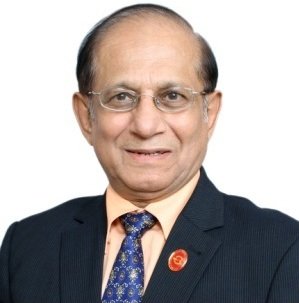Responsibility to Protect: China’s Version
14 Nov, 2013 · 4176
Dipankar Banerjee reflects China’s willingness to stand up to norms which are in the process of being established by the West
Responsibility to Protect (R2P) was accepted as a global norm at the World Summit Conference held at the United Nations in 2005. The Outcome Document of the Conference in paragraphs 138 and 139 accepted that all states have the responsibility to protect their populations from “genocide, war crimes, ethnic cleansing and crimes against humanity”. It also empowered the international community, through the United Nations, “to use appropriate diplomatic, humanitarian and other peaceful means, in accordance with Chapters VI and VIII of the Charter.” They also expressed their preparedness “to take collective action, in a timely and decisive manner, through the Security Council, in accordance with the Charter, including Chapter VII, on a case-by-case basis…”
This principle and consensus came about after the International Commission on Intervention and State Sovereignty, established by Canada in 2000, came out with its report, commonly known as ‘Responsibility to Protect’, in December 2001. This was a consequence of the massacres in Rwanda in 1994 of over 500,000 mainly Tutsis, and in Srebrenica, former Yugoslavia in 1995 of 8,000 Muslim men. The respective states were either helpless or collusive and the world stood by silently. This was a blot on humanity. In turn it called for norms to legitimise ‘humanitarian intervention’ to prevent such atrocities in future.
The norms set out under the Outcome Document are necessary commitments and no nation in the 21st century can afford to take these responsibilities lightly. Understandably, world leaders came to extend their support unanimously. But, some doubts lingered regarding how these were to be implemented in practice. How would it ensure that state sovereignty would not be trampled at will? In a world where national interests generally seemed to trounce over genuine humanitarian concerns, would the R2P be used to ride rough shod over sovereign states? Would R2P provisions be used to bring about ‘regime change’?
Speaking at the UN General Assembly in September 2011, PM Manmohan Singh had said, “Actions taken under the authority of the United Nations must respect the unity, territorial integrity, sovereignty and independence of individual states.” It believes that use of force under R2P should not be the first response and used only when all other means have been considered and exhausted.
Libya became a test case of the use of R2P, and UN Resolution 1973 laid down the provisions of intervention. Regrettably, most of these were violated in practice; particularly pursuit of ceasefire, arms embargo, and no-fly zone. Instead the focus was on bringing about regime change.
Hence, while there is agreement on international responsibility for protecting civilians in internal conflicts, there is insufficient clarity over the means to bring this about. In turn, this has led to an active international debate.
Brazil has suggested adopting a policy of ‘Responsibility while Protecting’ (RwP).While accepting the need to protect civilians in danger, international response, according to it, should be guided by caution, minimum use of force and after due deliberation. It should be exercised after exhausting all peaceful means and it must produce as little violence and internal instability as possible. Military action must adhere to the letter and spirit of the mandate and in the event that force is actually used, this must be judicious, proportionate and limited to the objectives established by the Security Council.
China recently has expressed major reservations about R2P and has proposed ‘Responsible Protection’ as the means to ensure this mandate. The China Institute of International Studies, its senior most think-tank reporting to the Foreign Ministry, called a small international group of experts to consider this at a conference in Beijing in October 2013 (at which this author was a participant).
It was clear that China’s response is in the backdrop of the strong recommendation for intervening in Syria, which Beijing and Moscow opposes. It is also important as China is demonstrating its willingness to stand up to norms which are in the process of being established by the West. It feels that as an emerging global player it needs now to set its own norms or be actively involved in setting new terms. In the process, it recommends four principles. Responsibility primarily vests in the government concerned, the concept of R2P applies only to the four international crimes, intervention must be proportionate, and use of force must only be authorized by the UNSC.
Amplifying this, Beijing recommends six principles that should be adhered to under what it calls ‘Responsible Protection’:
• Object of intervention must clearly be to protect the people of the target country
• The legitimacy of the ‘protection executors’ must be established
• The means of protection must be strictly limited
• Purpose of protection must be clearly defined; the patient must not be ‘killed’ as a result of intervention
• Protectors must be responsible for post intervention reconstruction
• The UN should establish mechanisms for supervision, outcome evaluation and post-factum accountability.
This position of China on an issue of major international concern today reflects both China’s emerging thinking and its likely role in international issues in future; a concern that the international community will be wise to take in to account.


